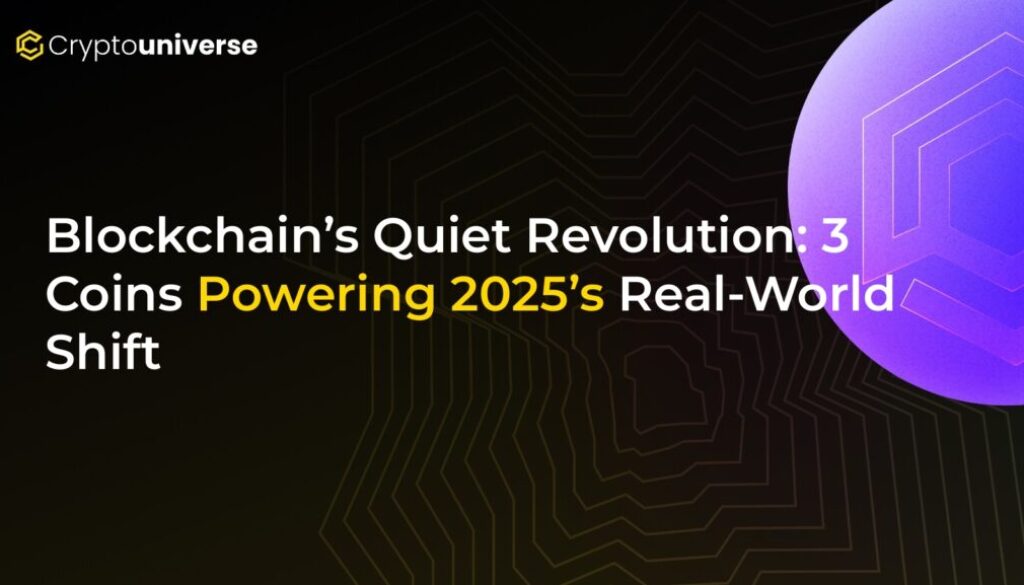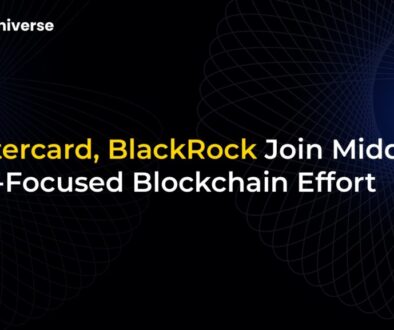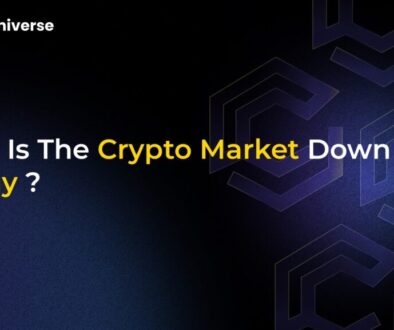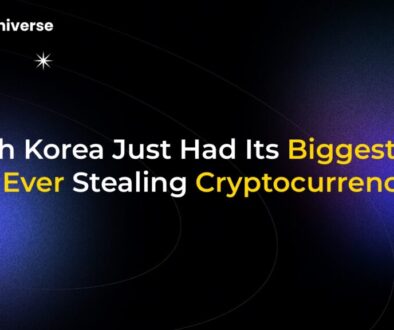Blockchain’s Quiet Revolution: 3 Coins Powering 2025’s Real-World Shift

Beyond the Hype: Crypto’s Pivot to Real-World Utility
The cryptocurrency market is in a constant state of flux, driven by volatile price swings, social media hype, and complex macroeconomic factors. While headlines often focus on the latest memecoin surge or a looming $100 billion market correction, a deeper, more significant transformation is underway. This is blockchain’s quiet revolution—a deliberate shift from speculative assets to projects with tangible, real-world applications.
As we look toward 2025, two powerful narratives are dominating the conversation: Real-World Assets (RWA) and Decentralized Physical Infrastructure Networks (DePIN). These sectors are not just buzzwords; they represent the maturation of blockchain technology, bridging the gap between digital finance and the physical world. This article explores the three pivotal trends and the coins at their forefront, shaping what could be a landmark year for the industry.
1. The RWA Gold Rush: Tokenizing the Global Economy
The concept of Real-World Assets is simple yet revolutionary: taking tangible assets like real estate, private equity, and government bonds and representing them as tokens on a blockchain. This process unlocks unprecedented liquidity, transparency, and accessibility for markets that were once exclusive and slow-moving.
The growth is staggering. The RWA market has already ballooned from a modest $9.6 billion to over $37 billion in market capitalization, signaling a massive influx of capital. This isn’t just about DeFi enthusiasts; it’s where traditional finance (TradFi) meets the efficiency of the blockchain.
Project Spotlight: Ondo Finance ($ONDO)
Leading this charge is Ondo Finance, a project focused on bringing institutional-grade financial products on-chain. Its flagship product, OUSG, provides a tokenized version of a U.S. Treasuries ETF, allowing crypto-native investors to access stable, low-risk yield from one of the world’s most trusted financial instruments. By tokenizing assets like this, Ondo is building the essential rails for the next wave of financial integration.
2. DePIN: Building Tomorrow’s Infrastructure, Today
If RWA is about bringing the old world on-chain, DePIN is about building the new world from the ground up. Decentralized Physical Infrastructure Networks use blockchain and token incentives to build and manage real-world infrastructure—from wireless networks and data storage to energy grids and satellite imaging.
With a current market value of over $17.9 billion, the DePIN sector is proving that blockchain can do more than just process transactions. It can coordinate global networks of contributors, who are rewarded with tokens for providing services. This model democratizes access to essential infrastructure and creates new opportunities for passive income.
Project Spotlight: Hedera ($HBAR)
While many projects are vying for dominance, Hedera has been quietly building the enterprise-grade foundation for this new economy. Known for its high speed, low fees, and eco-friendly consensus mechanism, Hedera is already being used by major corporations, governments, and even for powering Central Bank Digital Currencies (CBDCs). Its ability to handle vast amounts of data efficiently makes it a prime candidate for managing the complex logistics of AI, tokenized real estate, and other data-heavy DePIN applications, making it a potential sleeper giant for 2025.
3. The Memecoin Evolution: From Speculation to Community Power
It’s impossible to ignore the cultural force of memecoins. While often dismissed as purely speculative, they demonstrate something incredibly valuable: the power of community and retail engagement. In 2025, the strongest memecoins are those that leverage this power within robust, high-performance ecosystems.
The narrative is shifting from pure hype to a showcase of a blockchain’s underlying strength—its speed, low transaction costs, and ability to handle viral adoption.
Case Study: Dogwifhat ($WIF)
Built on the Solana blockchain, Dogwifhat has become a prime example of this evolution. Despite a volatile year, WIF maintains a market cap of over $800 million and boasts high liquidity and massive social media engagement. Its performance is less about the dog with a hat and more a testament to the Solana network’s capacity to support a high volume of retail activity seamlessly. WIF’s continued relevance shows that a strong community, backed by powerful technology, remains a formidable force in the crypto landscape.
The Bigger Picture: Navigating Market Uncertainty
These trends are unfolding against a backdrop of macroeconomic uncertainty. With the Federal Reserve’s policy decisions looming and the market still recovering from major corrections, investors are increasingly seeking projects with clear value propositions. The demand for corporate crypto treasury strategies, reported by giants like Morgan Stanley and BitGo, confirms that institutional players are also looking for sustainable, long-term investments.
Whether it’s the tangible yield from RWA, the passive income from DePIN, or the raw community power of a top-tier memecoin, the projects set to define 2025 are those that offer more than just a ticker symbol. They offer a stake in the future of a more integrated and decentralized world.


